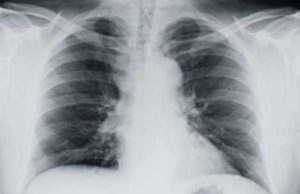
What is Benign Mesothelioma?
Benign mesothelioma is a non-cancerous form of mesothelioma. The condition, which is commonly referred to as solitary fibrous tumor of the pleura, appears more frequently in males than females. The tumors associated with benign mesothelioma typically start in the submesothelium—the tissues under the mesothelium. Similar tumors may grow in the lining of the abdomen (peritoneum) with benign mesothelioma.
The primary difference between the non-cancerous tumors of benign mesothelioma and the cancerous forms is that these tumors typically do not spread to adjacent tissue. Tumors associated with the cancerous forms of mesothelioma will proliferate rapidly, making mesothelioma treatment excessively complex and non-effective.
Symptoms Associated with Benign Mesothelioma:
Benign mesothelioma is a very rare medical condition; the disease accounts for less than 10 percent of all mesothelioma cases. That being said, presenting symptoms of benign mesothelioma are very similar to those connected with malignant pleural mesothelioma. The symptoms are so similar that it is almost impossible to differentiate between the two conditions without extensive surgical procedures or testing efforts.
The most common symptoms associated with benign mesothelioma are:
• Shortness of Breath
• Chest Pain
• Chronic Cough
The main reason for these symptoms frequently stems from the growth of the benign tumor and its subsequent pressing against the lungs. In this situation a medical professional may also observe a clubbed appearance of the fingers, which serves as a key sign for the growth of a tumor. The presence of clubbed fingers signifies that the sufferer is experiencing a low level of oxygen in the blood. Clubbed fingers are frequently associated with treacherously low levels of oxygen in the bloodstream.
How is Benign Mesothelioma Diagnosed?
Because the two diseases are impossible to distinguish, the same tests for diagnosing cancerous forms of mesothelioma are also used for diagnosing the benign condition. Following basic x-rays, a medical professional will utilize the following image-device systems to accurately diagnose the disease:
• CT Scans: This machine produces images by utilizing an x-ray generating device that rotates around the patient’s entire body. The device is connected to a high-tech computer, which provides cross-section images of the patient’s insides.
• MRI: This diagnostic tool uses radio waves and a magnetic field to create a cross-sectional image of the patient’s head or body. The MRI has proven effective in detecting tumors in or around the patient’s lungs.
These tests provide excellent images of the lungs and other affected regions of the human body. Following these tests, doctors will typically use an open lung biopsy to reach a definitive conclusion regarding the presence of cancerous or benign mesothelioma.
Treatment Options for Benign Mesothelioma:
Dissimilar to malignant mesothelioma, instances of benign mesothelioma are easily treatable. In the bulk of cases, mesothelioma surgery to remove the benign tumor is sufficient to treat the condition. The prognosis is typically excellent in these instances. That being said, the development of benign mesothelioma tumors can be an indication that a more severe mesothelioma-type condition may develop in the future. As a result, anyone diagnosed with the benign condition should continue with regular check-ups and x-rays following surgery.




























